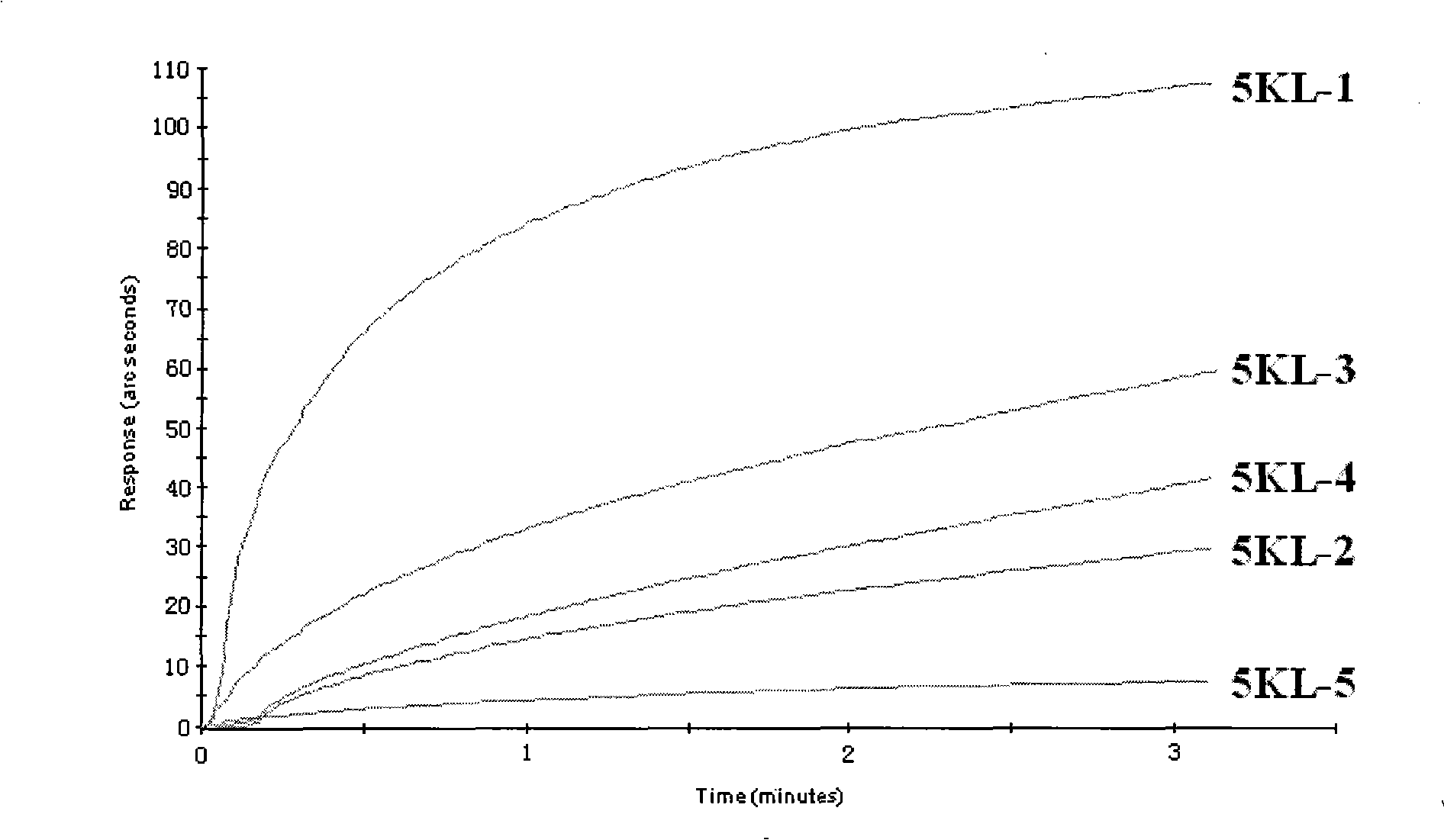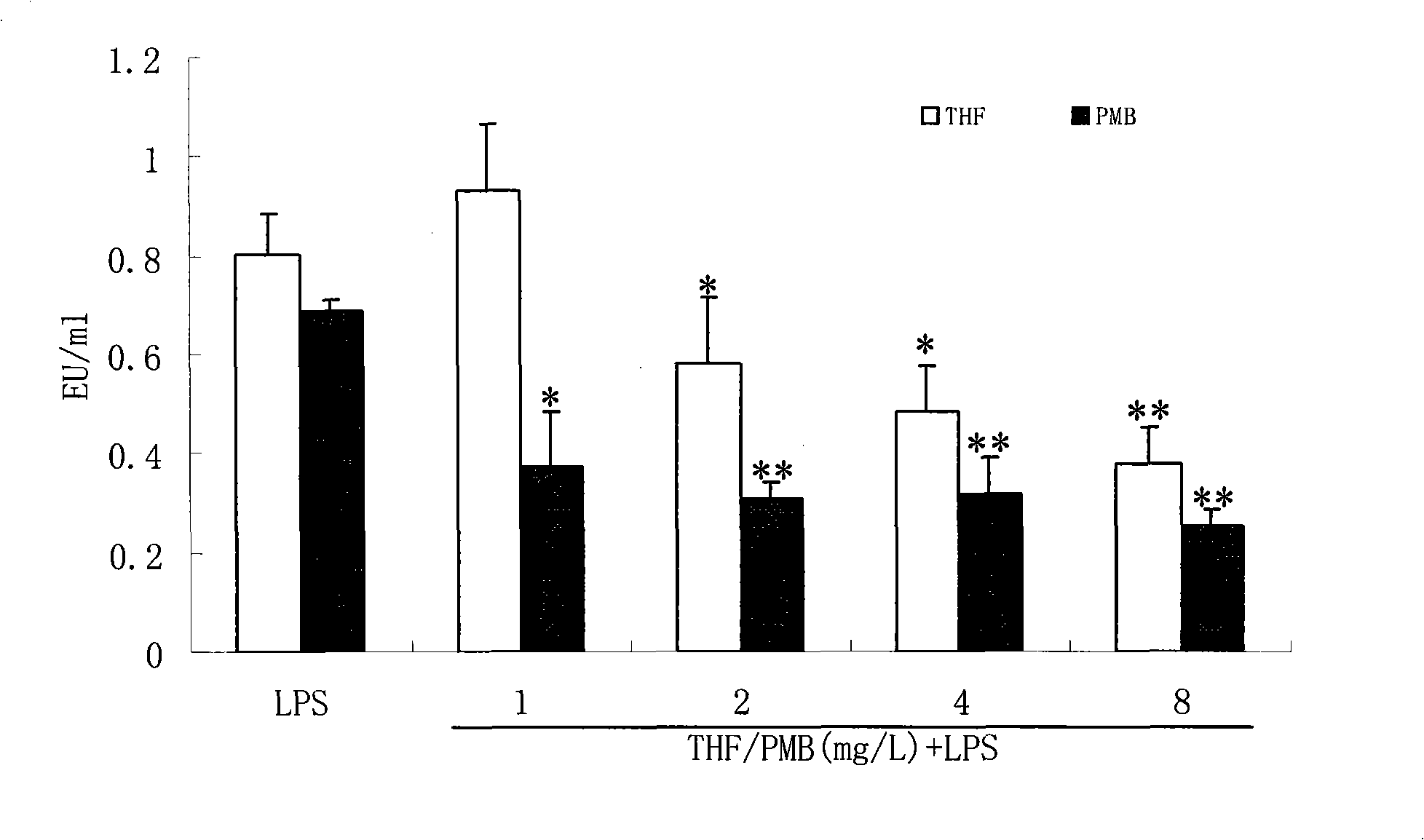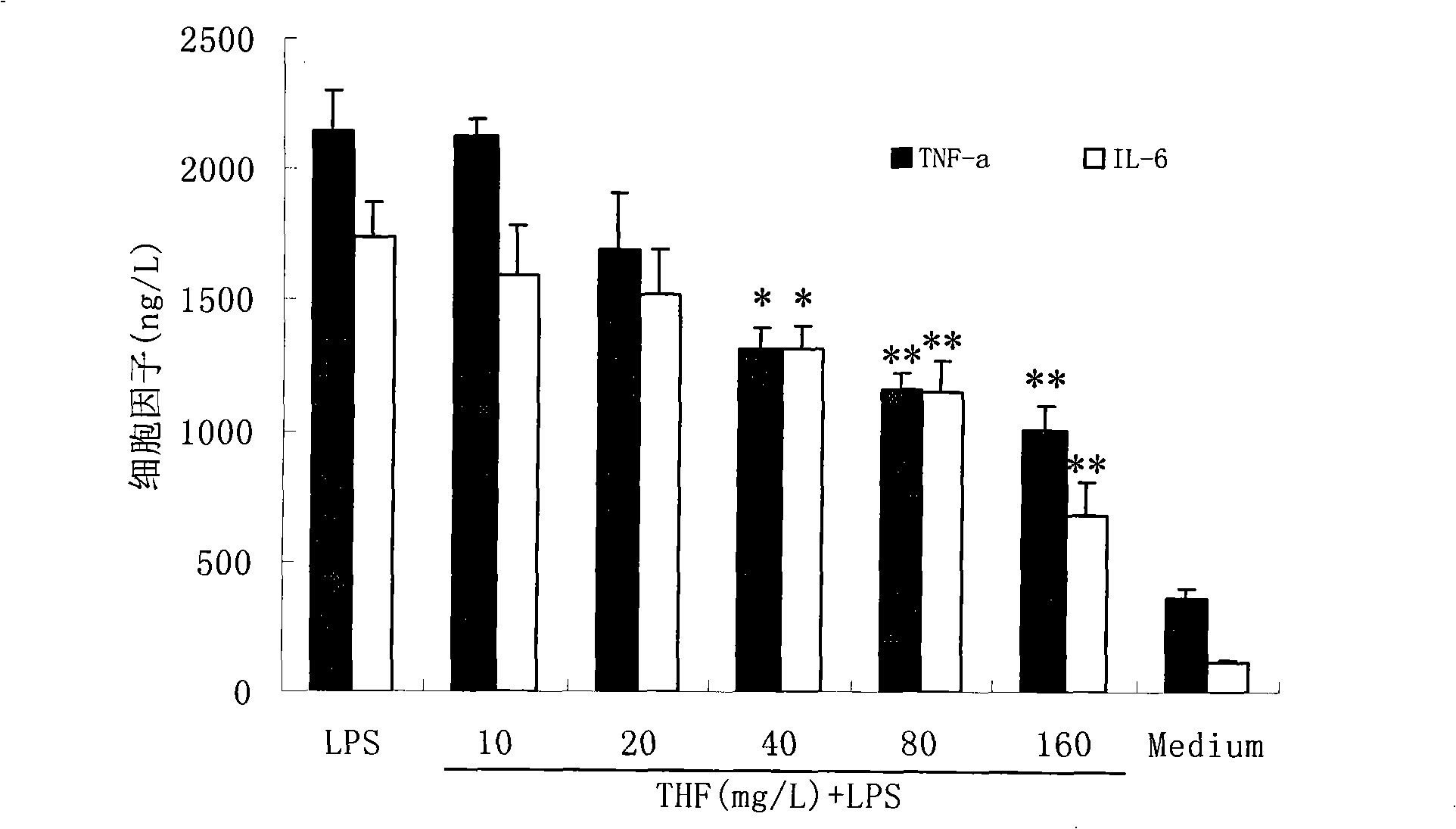Application of 2í», 5, 6í», 7-tetrahydroxy dihydroflavonol and its derivative for treating sepsis
A technology of tetrahydroxydihydroflavonol and derivatives, applied in the 2' field, can solve problems such as no sepsis drugs
- Summary
- Abstract
- Description
- Claims
- Application Information
AI Technical Summary
Problems solved by technology
Method used
Image
Examples
Embodiment 1
[0047] Embodiment 1: 12 kinds of Chinese medicinal decoctions and Lipid A binding reaction measurement results
[0048] 1.1 Experimental method:
[0049] (1) Using biosensor technology, lipid A (Lipid A) is coated on the sample pool of affinity-type specific and selective biosensor IAsys Plus (Affinity-sensor IAsys plus) as a stationary phase ligand; A) The anionic group that plays an important biological role in the structure is exposed, and it is used as a target for binding with active substances for treating diseases in traditional Chinese medicine;
[0050] (2) Prepare 12 kinds of traditional Chinese medicine water decoctions, take 5 μL samples respectively, and measure their binding reaction with Lipid A. The specific operation steps are as follows:
[0051] ① Binding reaction: add 45 μL of pH 6.0 and 20mM PBS, then add 5 μL of the sample to be tested, and aspirate after the binding reaction is balanced;
[0052] ②Dissociation reaction: wash with pH 6.0, 20mM PBS 50μL×3,...
Embodiment 2
[0056] Example 2: Extraction and separation of THF, the active ingredient of Scutellaria baicalensis anti-LPS
[0057] 2.1 Separation of macroporous adsorption resin and screening of active sites
[0058] 2.1.1 Experimental method: add about 500g of Scutellaria baicalensis, soak in 5.0L of distilled water for 24h, decoct at 100°C for 1h, filter through coarse filter paper, centrifuge at 9000rpm / min for 35min, collect the supernatant and concentrate it to about 1.0L under reduced pressure; then load the sample in AB-8 macroporous adsorption resin was eluted sequentially with distilled water and 10%, 20%, 40%, and 60% ethanol, and the eluents were collected, concentrated under reduced pressure, and then freeze-dried to obtain 5 groups. The fractions were named as SbG-1-5 according to the order of elution. The components of SbG were dissolved in PBS to 2.0 g / L, and 5 μL was loaded as the sample. The binding activity to Lipid A was detected according to the method in 1.1.
[0059...
Embodiment 3
[0070] Example 3: THF neutralizes the activity of LPS in vitro
[0071] 3.1 Experimental method: Incubate corresponding concentrations of THF and PMB (both 1.0, 2.0, 4.0, and 8.0 mg / L) with LPS at a final concentration of 0.2 ng / mL at 37°C for 30 min, and add an equal amount of pyrogen-free water to the LPS control group , the LPS value after incubation was detected by the dynamic turbidimetric limulus test, and the detection was repeated 4 times for each concentration. The specific operation was carried out according to the instructions of the EDS-99 bacterial endotoxin determination system.
[0072] 3.2 Experimental results: THF has the activity of neutralizing LPS, and its neutralizing effect is weaker than that of PMB. Statistical analysis shows that THF has a significant neutralization effect on 0.2ng / ml LPS at 2.0mg / L level (P Figure 6 shown.
PUM
 Login to View More
Login to View More Abstract
Description
Claims
Application Information
 Login to View More
Login to View More - R&D
- Intellectual Property
- Life Sciences
- Materials
- Tech Scout
- Unparalleled Data Quality
- Higher Quality Content
- 60% Fewer Hallucinations
Browse by: Latest US Patents, China's latest patents, Technical Efficacy Thesaurus, Application Domain, Technology Topic, Popular Technical Reports.
© 2025 PatSnap. All rights reserved.Legal|Privacy policy|Modern Slavery Act Transparency Statement|Sitemap|About US| Contact US: help@patsnap.com



